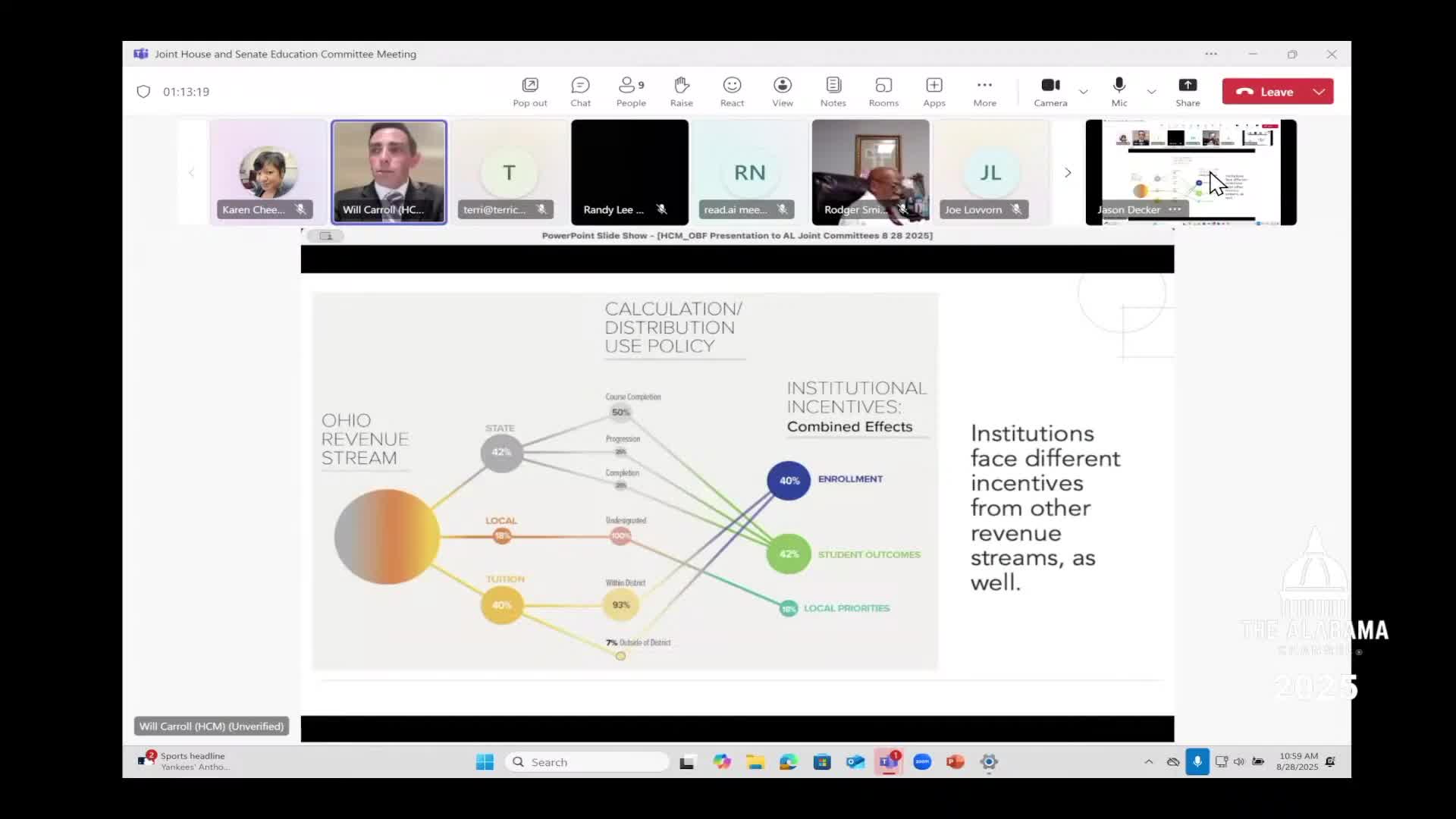Funding Formula Discussion Highlights State Goals and Student Needs
August 29, 2025 | Joint Interim Committees, Alabama Legislative Sessions, Alabama
This article was created by AI summarizing key points discussed. AI makes mistakes, so for full details and context, please refer to the video of the full meeting. Please report any errors so we can fix them. Report an error »

During a recent meeting of the Alabama Joint Legislative Education Committee, discussions centered on the future of the state's education funding formula, highlighting the need for a balanced approach that addresses various critical factors. The committee emphasized the importance of aligning funding with state goals, student needs, and institutional costs, which are essential for creating a sustainable educational framework.
A key takeaway from the meeting was the proposal to incorporate a balanced funding formula that reflects core costs associated with enrollment, outcome-based funding, and institutional missions. This approach aims to ensure that financial resources are allocated effectively to support both students and educational institutions.
The committee noted that approximately half of the states in the country are already utilizing outcome-based funding models in their four-year institutions. This trend indicates a growing recognition of the importance of measuring educational success through metrics such as student progression, completion rates, and specific weights for target populations. Additionally, there is an increasing focus on workforce outcomes, suggesting that Alabama may follow suit in adapting its funding strategies to better prepare students for the job market.
As the committee continues to refine its funding formula, the implications for Alabama's educational landscape could be significant. By prioritizing a comprehensive approach to funding, lawmakers aim to enhance educational opportunities for all students, ultimately fostering a more skilled and competitive workforce in the state. The discussions from this meeting will likely shape future legislative actions and funding decisions, directly impacting the quality of education available to Alabama residents.
A key takeaway from the meeting was the proposal to incorporate a balanced funding formula that reflects core costs associated with enrollment, outcome-based funding, and institutional missions. This approach aims to ensure that financial resources are allocated effectively to support both students and educational institutions.
The committee noted that approximately half of the states in the country are already utilizing outcome-based funding models in their four-year institutions. This trend indicates a growing recognition of the importance of measuring educational success through metrics such as student progression, completion rates, and specific weights for target populations. Additionally, there is an increasing focus on workforce outcomes, suggesting that Alabama may follow suit in adapting its funding strategies to better prepare students for the job market.
As the committee continues to refine its funding formula, the implications for Alabama's educational landscape could be significant. By prioritizing a comprehensive approach to funding, lawmakers aim to enhance educational opportunities for all students, ultimately fostering a more skilled and competitive workforce in the state. The discussions from this meeting will likely shape future legislative actions and funding decisions, directly impacting the quality of education available to Alabama residents.
View full meeting
This article is based on a recent meeting—watch the full video and explore the complete transcript for deeper insights into the discussion.
View full meeting
